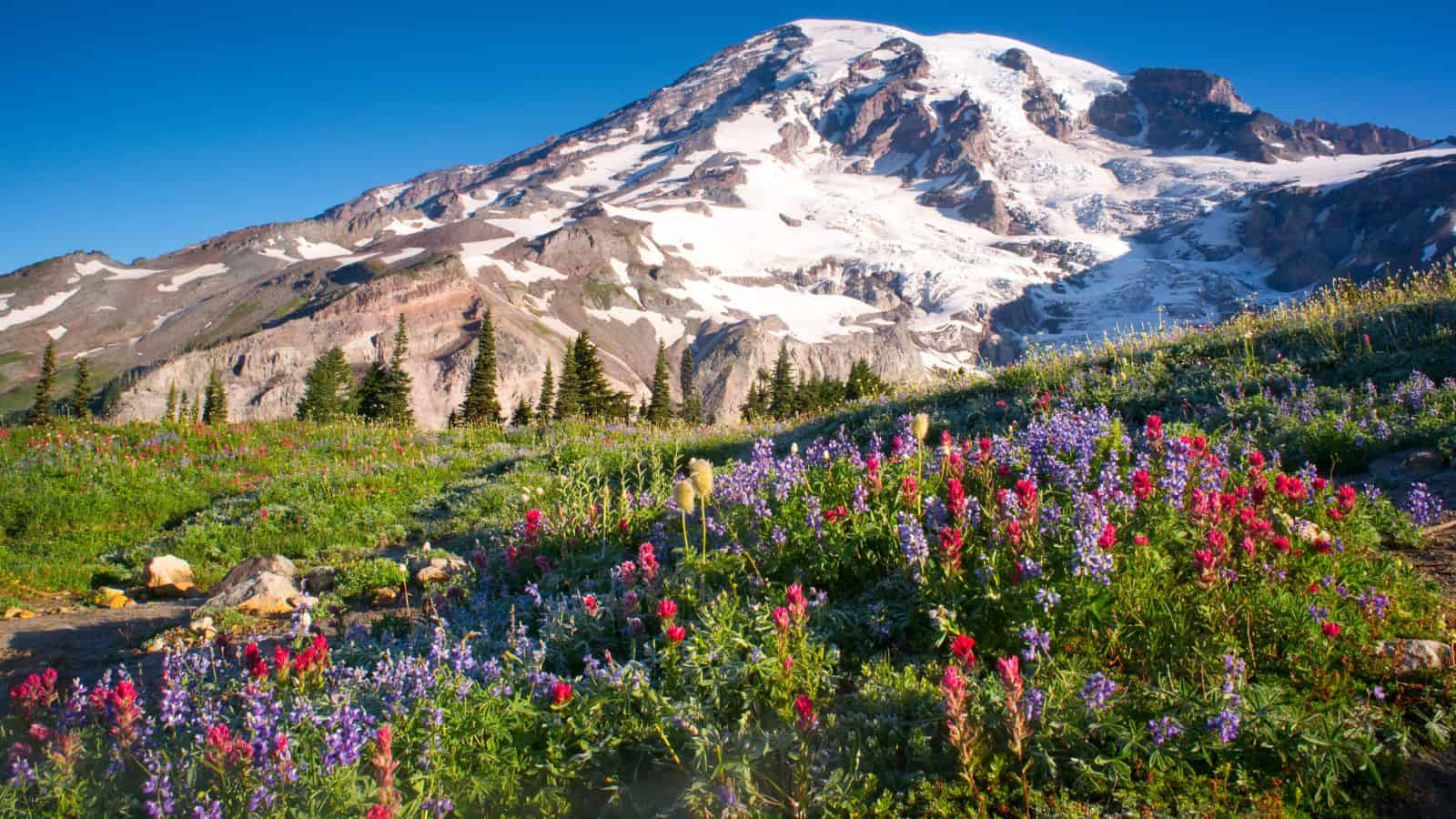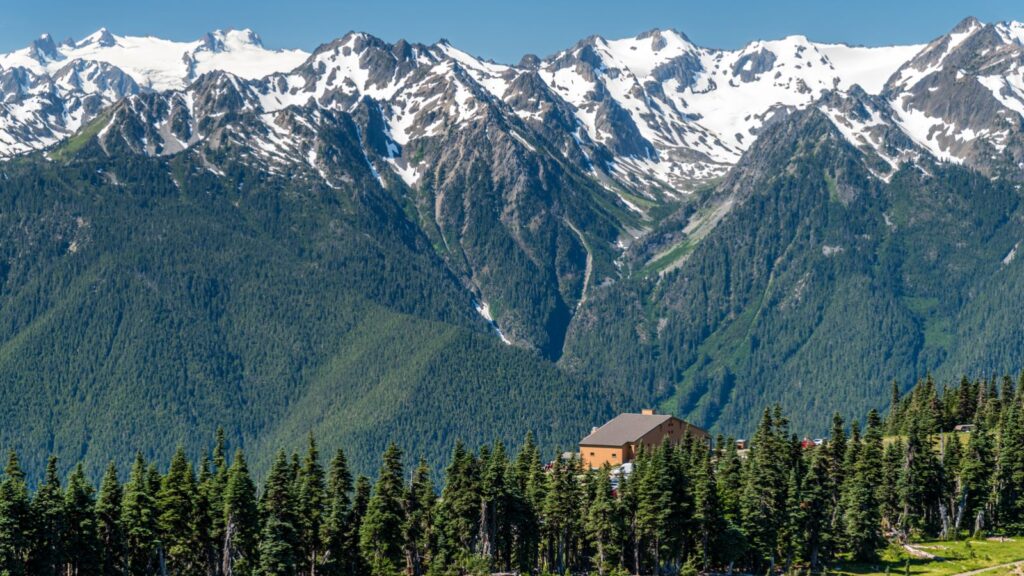The United States boasts an extraordinary array of natural wonders, from awe-inspiring geological formations to lush ecosystems and cascading waterfalls. These breathtaking landscapes can be found throughout the country’s national parks and scenic attractions, so if you’re seeking true natural beauty and endless adventures, these 20 destinations should be at the top of your list.
The Grand Canyon

Carved by the Colorado River over millions of years, the Grand Canyon is a geological wonder stretching 278 miles. The National Park Service says, “Located on ancestral homeland of 11 Associated Tribes, Grand Canyon is one of the most spectacular examples of erosion anywhere in the world—unmatched in the incomparable vistas it offers visitors from the rims.”
Niagara Falls

Straddling the border between the U.S. and Canada, the falls comprise three interconnected waterfalls: the Horseshoe Falls, the American Falls, and the Bridal Veil Falls. According to National Geographic, “Every 60 seconds, six million cubic feet of water rushes over the falls, enough water to fill a million bathtubs each minute.”
Glacier National Park

According to U.S. News, “the park boasts more than 700 lakes, numerous waterfalls, and two mountain ranges, spread across more than 1 million acres that shelter a variety of wildlife.” The park’s alpine scenery is dotted with glaciers, including the iconic Grinnell Glacier.
Yellowstone National Park

This park is home to an impressive collection of geothermal wonders, including the iconic Old Faithful geyser, which erupts approximately every 90 minutes. There is a diverse range of wildlife, such as bison, wolves, and grizzly bears, making it a paradise for nature enthusiasts and photographers alike.
Yosemite National Park

Renowned for its towering granite peaks, including iconic landmarks such as El Capitan and Half Dome, the park attracts climbers and adventurers from around the world. The park has numerous picturesque waterfalls, including the towering Yosemite Falls and the ethereal Bridalveil Fall, providing stunning backdrops for hiking and photography.
Denali National Park

Denali National Park is home to North America’s tallest peak, Denali, formerly known as Mount McKinley, which stands at 20,310 feet. The wilderness of the park encompasses a range of ecosystems, from tundra and forest to glaciers and mountains, providing habitat for a variety of wildlife, including grizzly bears, wolves, and caribou.
Great Smoky Mountains National Park

Recognized as one of the most biodiverse regions in the world, this park boasts an incredible array of plant and animal species. Visitors can see its iconic fog-covered mountains and lush forests, which provide habitat for black bears, deer, and hundreds of bird species.
Antelope Canyon

A unique geological wonder, this canyon was formed by centuries of wind and water erosion that created narrow passageways and sculpted sandstone walls. It is known for its vibrant light beams that create a surreal atmosphere for photographers and visitors.
Zion National Park

Towering sandstone cliffs, narrow slot canyons, and the picturesque Virgin River can all be explored at Zion National Park. There are challenging hikes for adventurers and scenic drives or easy trails for visitors of all skill levels. The stunning landscape is also home to diverse wildlife, including bighorn sheep and desert tortoises.
Arches National Park

The iconic Delicate Arch and Landscape Arch are just the tip of the 2,000 natural sandstone arches in this national park. Millions of years of erosion have created the park’s unique geological formations, which provide a surreal landscape for hiking, photography, and exploration.
Everglades National Park

The largest tropical wilderness in the U.S., Everglades National Park encompasses a vast and diverse ecosystem of wetlands, mangroves, and sawgrass prairies. It is home to a wide range of wildlife, including alligators, panthers, and manatees, making it a hotspot for nature enthusiasts and photographers.
Monument Valley

Located within the Navajo Tribal Park, Monument Valley is known for its majestic red sandstone buttes that rise from the desert floor. Lonely Planet says, “Its brick-red spindles, sheer-walled mesas, and grand buttes, stars of countless films, TV commercials, and magazine ads, are part of the modern consciousness.”
Mount Rainier

Standing at 14,411 feet, Mount Rainier is the tallest peak in the Cascade Range. Visitors to the national park can explore glaciers, meadows, and old-growth forests, where they will find diverse ecosystems and breathtaking landscapes. Popular activities include hiking, climbing, and wildlife watching.
Bryce Canyon National Park

Home to a spectacular collection of colorful rock formations known as hoodoos, the Bryce Canyon has been formed by frost-wedging and erosion over millions of years. Perfect for hiking, photography, and stargazing, the landscapes have a surreal feel and a diverse range of wildlife, including mule deer and mountain lions.
Redwood National and State Parks

The towering coastal redwood trees are the tallest on Earth and can reach heights of over 350 feet. These old-growth forests provide habitat for diverse wildlife, including Roosevelt elk, marbled murrelets, and the endangered northern spotted owl. Visitors can enjoy hiking trails, lookouts, and scenic drives.
Great Sand Dunes National Park

Featuring the tallest sand dunes in North America, the national park reaches heights of over 750 feet. Travel + Leisure says, “Climb the sandy peaks and then strap on your rented sandboard (or sled) and slide back down. If you happen to be on the dunes at sunset, watch the shadows get long and the color of the dunes change.”
Crater Lake National Park

Crater Lake is the deepest lake in the United States. It was formed within the caldera of a collapsed volcano and is renowned for its stunning blue color and clarity. Visitors can explore the park’s scenic Rim Drive and hiking trails, which offer breathtaking panoramic views of the lake and surrounding landscapes.
Acadia National Park

With its rugged coastline, granite cliffs, and pristine beaches, Acadia National Park provides stunning backdrops for outdoor adventures and wildlife viewing. Scenic drives like the Park Loop Road offer visitors endless opportunities for exploration of the picturesque islands and historic lighthouses.
Olympic National Park

From temperate rainforests to alpine meadows, this national park boasts a diverse range of ecosystems that provide habitats for plant and animal species. Iconic landmarks include Mount Olympus towering over the landscape and the Hoh Rainforest, one of the wettest places in the continental United States.
Death Valley National Park

The hottest, driest, and lowest national park in the United States, Death Valley sees temperatures soaring well above 100°F (37.8°C) in the summer months. Despite these extreme conditions, it is home to a variety of wildlife and plant species and offers visitors stunning landscapes, from salt flats to rugged mountains, to explore.







